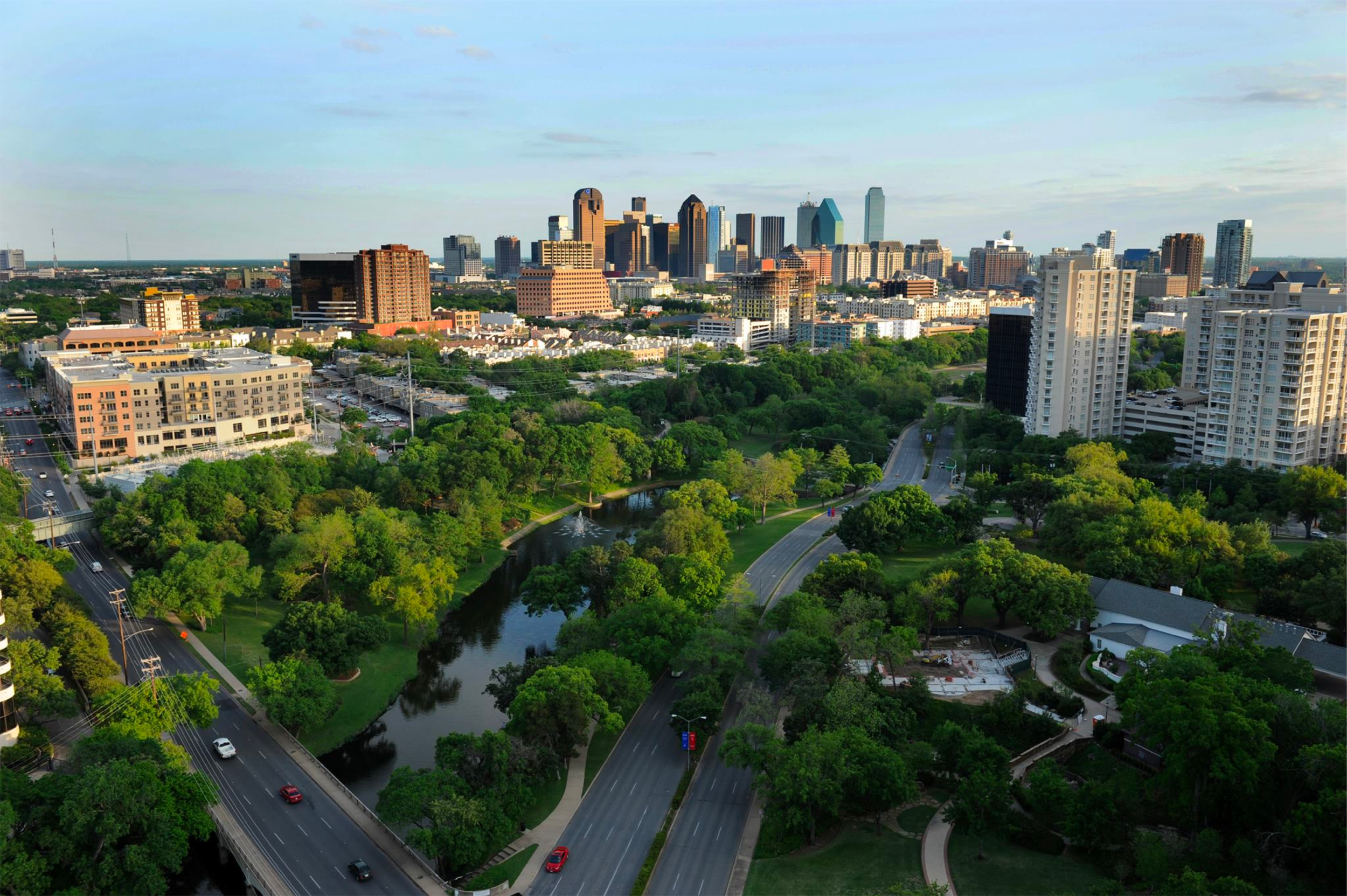
the turtle Creek corridor
The Turtle Creek Corridor has been home to area residents for over 3,000 years.
Discover the colorful history of our neighborhood
A Brief History of Turtle Creek
Relics discovered in archaeological surveys confirm that Turtle Creek has been called home for thousands of years. Dart points and flint chips from the making of stone tools date back 3,000 years to 1,000 B.C. We know Native Americans camped here much later and enjoyed the outcropping of trees and spring water sources. It is believed the creek came to be known as Turtle Creek when Texas Rangers camped here when they were fleeing attacking Indians in 1837. They referred to the water as the "creek with all the turtles.”
Earliest records of land ownership date from 1845, when Texas was a Republic. A land grant consisting of a half-section of land (320 acres) was awarded to William Grigsby. Grigsby sold the ground at one dollar an acre to Calvin Cole a year later. Dallas founder John Neely Bryan witnessed this transaction. Cole's son built a log home near the creek, but it was soon removed for fear of flooding. The Union Pacific Railroad built the Missouri-Kansas-Texas Railroad and established the network in 1865 as the Southern Branch. The route along Turtle Creek was commonly called the MKT and eventually the Katy.
A significant development in the neighborhood’s history was the purchase of twenty acres in 1903 by The Dallas Consolidated Electric Street Railway Company. With further backing of land developers Oliver P. Bowser and Captain William H. Lemmon, Oak Lawn Park was founded, now known as Turtle Creek Park. Just a five-cent streetcar ride from downtown, the developers hoped the park would attract weekend picnickers and prospective land buyers to Dallas' first northern suburbs.
In 1907 the Vincentian Fathers built Holy Trinity College on the west bank of Turtle Creek. Later named the University of Dallas, the college was relocated, and the building became home to Jesuit High School in 1942. Seventeen years later, the Roman Catholic Diocese of Dallas sold the 21-acre tract to developers who built a 21-story apartment complex, office buildings, and a shopping center. The face of Turtle Creek was changing, and the direction was up.
In 1915, the Dallas Park Board bought thirty-six acres from the estate of John Cole for $4,000 to establish Reverchon Park. Three bridges were built across Turtle Creek, extending Maple, Fairmont, and Bowen Streets west. In 1920 the baseball diamond was constructed in Reverchon Park, and in 1953 Willie Mays and the New York Giants faced pitching greats Bob Feller and Bob Lemon and the Cleveland Indians in exhibition play.
Two fine parks were in place along the creek. Still, Landscape Architect George Kessler's vision defined the Turtle Creek corridor and set into motion what has become one of the nation's premier urban green spaces and residential neighborhoods. Kessler's A City Plan for Dallas commission of the Park Board in 1911 defined the corridor as a proposed development that will enhance the present scenic value of Turtle Creek and will become one of the most critical links in the boulevard system...it will be the direct means of conserving the high-class character of an essential residential section and of furnishing it with a natural and convenient thoroughfare to the heart of the city.
In 1957, noted architect Howard Meyer designed the first high-rise apartment building at 3525 Turtle Creek Blvd. A jet age of modern luxury apartment living came to Turtle Creek, attracting such notables as Greer Garson, Jimmy Dean, Clint Murchison, Sr., and Minnie Marcus. One by one, the grand old homes on the creek banks made way for more luxury high-rises. In 1959 the Kalita Humphreys Theater was built on the east bank of Turtle Creek. Designed by Frank Lloyd Wright, the innovative theater remained home to the Dallas Theater Center for over 50 years and stood as the only purpose-built theater by Wright.
Today the Turtle Creek corridor is nicknamed Dallas' Front Yard and remains a showplace for the City. Neighborhood organizations monitor new aesthetic design developments, density, height restrictions, and setbacks as construction cranes dot the skyline. The Katy Trail is a model for the rails-to-trails concept of urban recreation. The Perot Family built their corporate campus on the banks of Turtle Creek with an initiative to preserve its natural beauty. We feel that William Grigsby, George Kessler, and the City fathers would be proud of their beloved Turtle Creek today.





